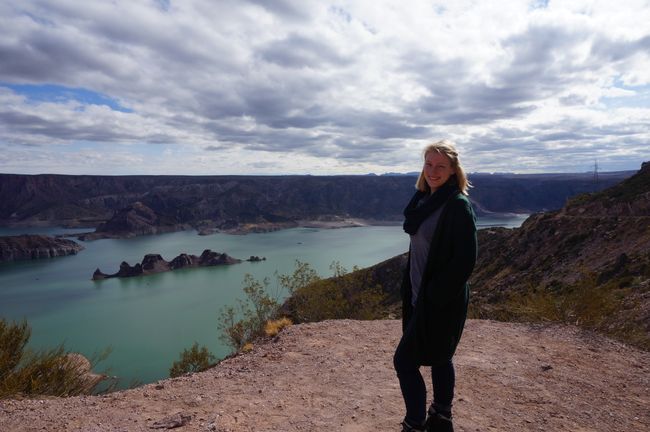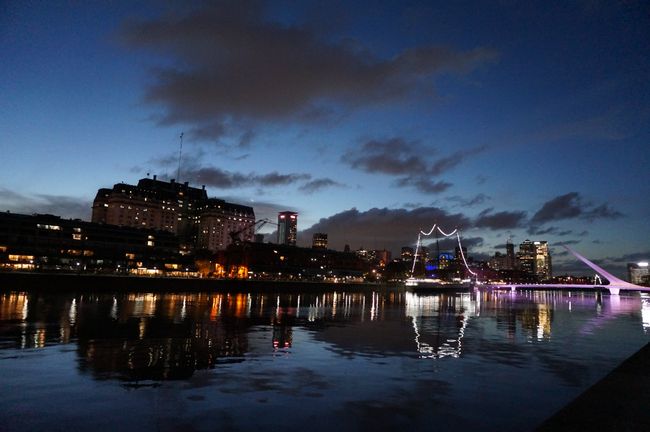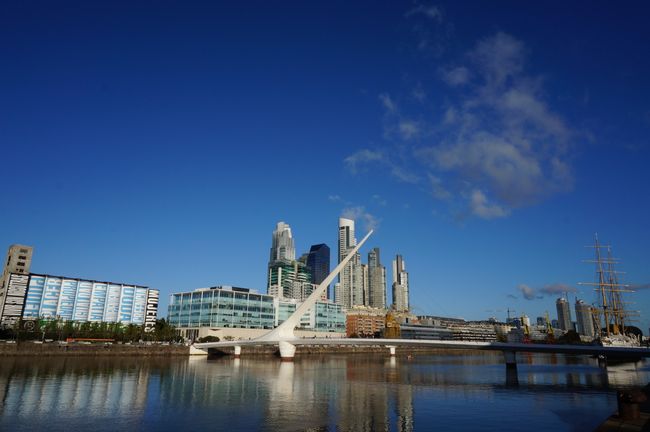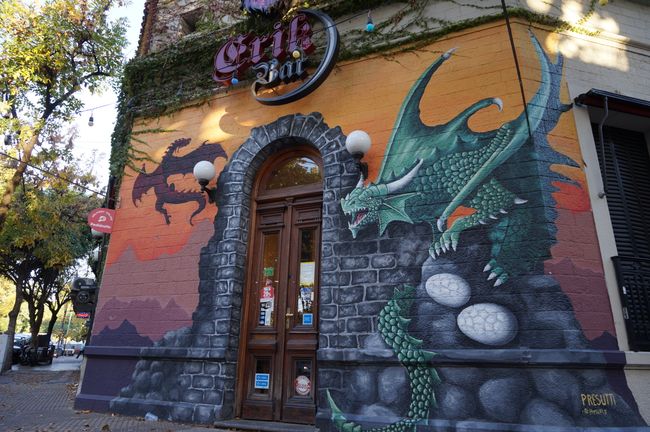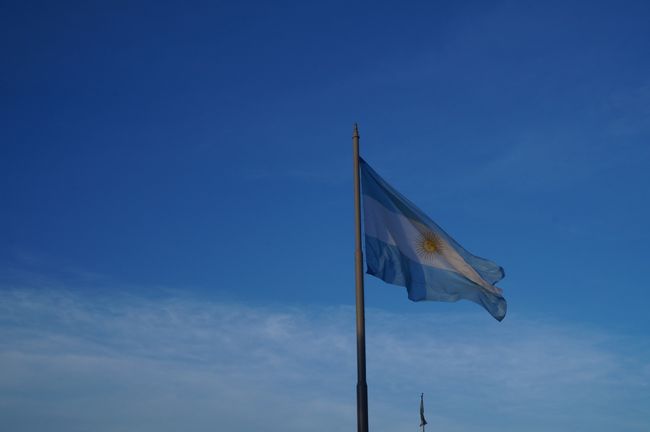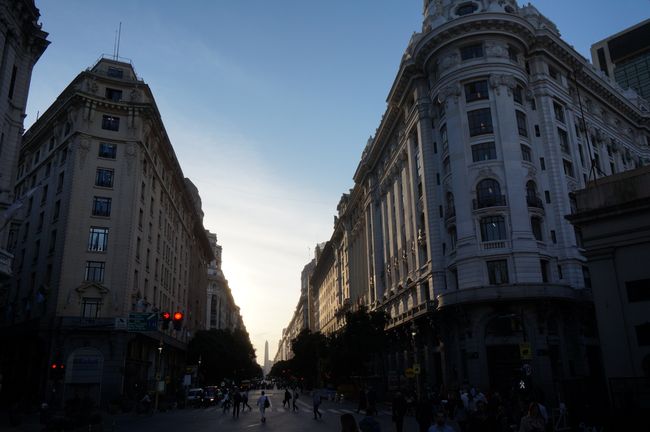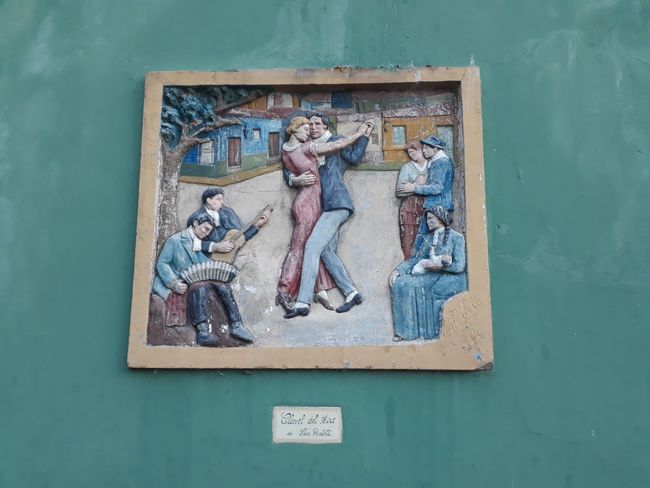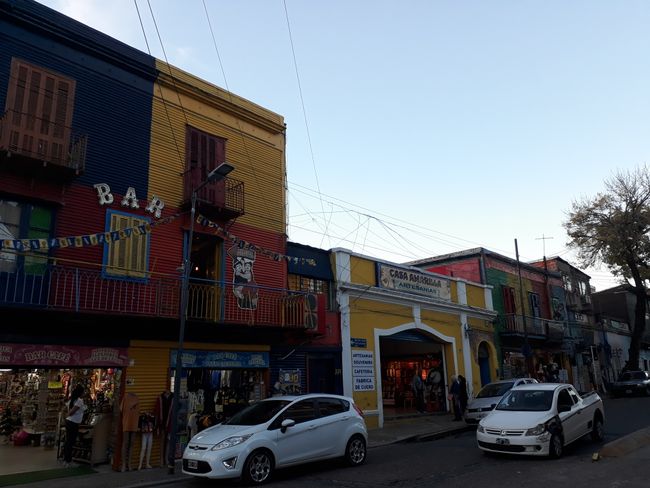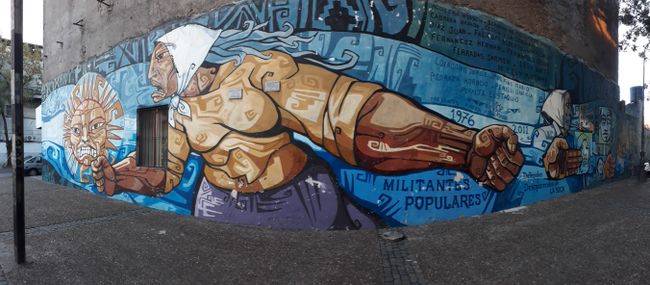Welcome to Buenos Aires!
ප්රකාශිතයි: 12.05.2019
පුවත් පත්රිකාවට දායක වන්න
GERMAN
Exactly 12 days ago, I set off with a large, meticulously packed travel backpack to the airport to arrive in Buenos Aires after 24 hours of travel time. However, after my hostel shuttle had a small accident, I made my way to my long-awaited hostel bed via bus, subway, and finally on foot (thoughtfully packed 19kg backpack? Well, maybe not).
At first glance, Buenos Aires reminds me of New York: streets arranged at right angles to each other, a diagonal crossing where the famous Obelisk can be seen, relatively tall buildings, street art, and art museums. However, the architectural style is European: English, Italian, Spanish, depending on the building. The culture is similarly influenced, with German punctuality, almost English bus queues, a French culture of demonstrations, and of course the Spanish language. Here, 'tú' becomes 'vos' and 'vosotros' becomes 'ustedes'. Letters that are pronounced as 'j' in Spain (ll, y) are pronounced as 'sch' here, which supposedly comes from Portuguese. Since I'm not sure which language some Brazilians here are actually speaking with me, this explanation seems plausible to me.
In Buenos Aires, you quickly get to know other travelers, whether it's on the free walking tour, in the hostel, through Couchsurfing, or at the language school. The majority of travelers come from other countries in South America, especially Brazil. In the language school, where I took courses to reconcile myself with my archenemy, the 'subjunctive', most of the students were from Sweden and Switzerland, which is complicated because I can't tell the two countries apart in Spanish. From Palermo to San Telmo, there are opportunities to go out everywhere, whether it's clubs, bars, breweries, or asado (Argentine BBQ). But you can also simply meet up for a mate tea in the park or take a day trip to Tigre, the Argentine equivalent of Venice.
Tonight, my journey continues with an overnight bus to Cordoba. From there, I will continue on to Mendoza and then Santiago de Chile.
I'll keep you updated. Hasta luego.
Dory
ENGLISH
About 12 days ago, I made my way to the airport loaded with a big, precisely packed backpack. After 24 hours of traveling, I reached Buenos Aires and managed to get to my hostel bed via bus, subway, and finally on foot. So much for the carefully packed 19kg.
At first glance, Buenos Aires reminded me of New York due to its rectangular street layout, the diagonal avenue with the famous obelisk, the street art, and the art museums. However, the architectural style of the buildings is more European. More European elements can be found in the culture as well, such as German punctuality, the British way of queuing for buses, a French-style culture of protests, and of course the Spanish language. Okay, the latter varies as 'tú' becomes 'vos' and 'vosotros' becomes 'ustedes'. All sounds that are pronounced as 'j' in Spanish (y, ll) are pronounced as 'sh' here. I heard that this comes from Portuguese, which explains why I sometimes can't distinguish between Portuguese and Spanish when speaking to Brazilians.
It's easy to meet other travelers in Buenos Aires, whether on the free walking tour, in the hostel, through Couchsurfing, or at the language school. The majority of tourists and travelers come from other South American countries, mainly Brazil. In the language school where I took courses to make peace with my enemy, the subjunctive mood, most of the students were from Switzerland and Sweden. Two country names that I can't distinguish in Spanish. There are plenty of options for going out in Buenos Aires, from clubs and bars to cervezarias (beer gardens) and asados (Argentine BBQ). But you can also just meet up for mate tea in the park or take a day trip to Tigre, the little Argentine Venice.
Tonight, I'm continuing my journey with an overnight bus to Cordoba. After that, I'll be heading to Mendoza and then Santiago de Chile.
Hasta luego.
Dory
#BuenosAires #Boca #Palermo #SanTelmo #Tigre #PuertoMadero #FrauMaderInMadero #Argentina #IsThisEvenSpanish
පුවත් පත්රිකාවට දායක වන්න
පිළිතුර

සංචාරක වාර්තා ආර්ජන්ටිනාව

